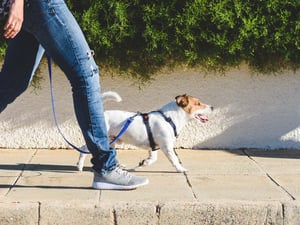Knowing proper pet-care safety is crucial. It helps prevent accidents, injuries, and potential harm to our beloved pets. By being informed about potential hazards, toxic substances, and best practices in pet care, we can create a safe environment that promotes their well-being and reduces the risk of emergencies.
Let's put your knowledge to the test and see if you are an expert in the field of pet-care safety!
Ensuring the safety and well-being of our beloved pets is of paramount importance. From understanding potential hazards to being prepared for emergencies, being knowledgeable about pet-care safety is crucial.
In this article, we will explore some key aspects of pet safety, including the toxicity of spider plants for cats, the danger of leaving dogs in hot cars, important safety precautions when walking dogs, the risks of administering human medication, handling cases of suspected toxic ingestion, and identifying common household items that can be hazardous to our furry companions.
-
Spider Plant Toxicity: Did you know that spider plants, known for their air-purifying properties, can be toxic to cats? If ingested, spider plants (Chlorophytum comosum) can cause gastrointestinal upset, vomiting, and even lethargy in felines. It's important to keep these plants out of your cat's reach or consider opting for pet-safe alternatives to ensure their well-being.

-
Hot Car Hazards: Leaving a dog unattended in a parked car can quickly become a life-threatening situation. Even on a moderately warm day, the temperature inside a car can soar to dangerous levels. Remember, temperatures above 90°F (32°C) can cause heatstroke and irreversible organ damage. Never leave your dog alone in a car, even for a few minutes.
-
Walking Safety Precautions: When taking your dog for a walk, it's crucial to prioritize safety. One important precaution is to keep your dog on a short leash. This helps maintain control, prevents them from darting into traffic or engaging in potentially dangerous encounters with other animals. Keeping your dog close by also enables you to monitor their behavior and address any potential hazards promptly.

-
Medication Mishaps: Administering human medication to pets without consulting a veterinarian can have severe consequences. Many medications that are safe for humans can be toxic to animals. Always consult your veterinarian before giving any medication to your pet. They can provide the appropriate dosage and guide you on pet-specific medications that are safe and effective.
-
Suspected Toxic Ingestion: If you suspect your pet has ingested something toxic, it's important to act swiftly. Do not induce vomiting or give your pet anything unless directed by a veterinarian. Instead, immediately contact your veterinarian or a pet poison control hotline for guidance. They will assess the situation and provide instructions based on the specific toxin ingested, ensuring the best course of action.

-
Hazardous Household Items: Our homes contain numerous everyday items that can pose a threat to our pets if ingested. One common household item that can be hazardous to pets is rubber bands. Cats, in particular, may find them enticing to play with, but ingesting rubber bands can lead to intestinal blockages or choking hazards. Ensure all potentially harmful items, such as rubber bands, are kept securely out of reach of curious paws.
Pet-care safety should always be a top priority for pet caregivers. By being aware of potential hazards, we can create a safer environment for our furry companions. Remember, regular veterinary check-ups, pet-proofing your facilities, and staying educated on pet safety practices are key to ensuring a happy, healthy, and safe life for pets.
Now that you've honed your expertise in pet-care safety, schedule a demo to explore the capabilities of our cutting-edge tools. Experience how our innovative solutions can streamline your operations, enhance efficiency, and deliver outstanding customer service.
Subscribe to the Gingr Blog






